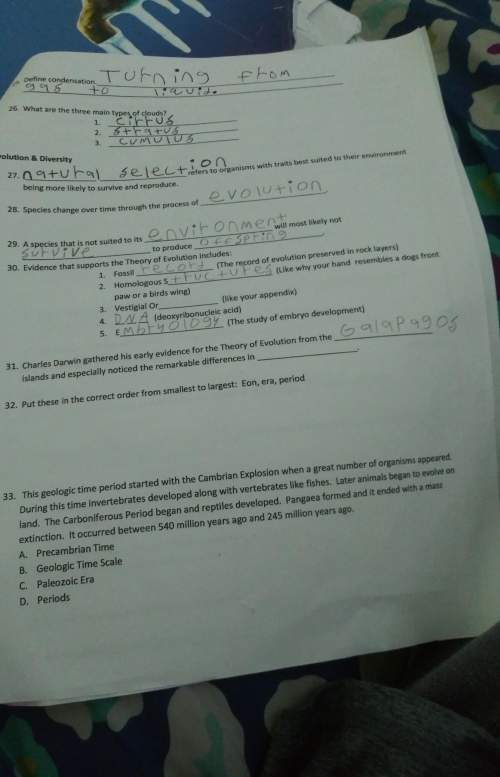
Physics, 18.11.2019 18:31 Teddybearnerd
Estimate the mass of the earth’s troposphere using the following assumptions, being mindful of units. (1) the earth is a smooth sphere of radius 6000 km. (2) the troposphere’s mass density varies linearly from 1 kg m − 3 at the earth’s surface to 1 /3 kg m − 3 at the top of the troposphere and is not a function of latitude or longitude. (3) the troposphere occupies the first 11 km of the atmosphere above the earth’s surface.(a) estimate the mass of the earth's troposphere, based on the above assumptions. (b) again, to put this into perspective, assume the layer of air in the troposphere were to be replaced by a layer of water with the same total mass. how deep would the layer of water need to be? as usual here, assume that the mass density of water, δ, is 1000 kg/m3.

Answers: 3
Another question on Physics

Physics, 22.06.2019 05:50
There are two routes similar in terrain; however, one route has an incline of approximately 28 degrees, and you must decide on which route to take. what is the maximum road grade that your fully loaded ecv can climb?
Answers: 2

Physics, 22.06.2019 06:40
Light traveling in a medium with a refractive index 1.19 is incident on a plate of another medium with index of refraction 1.79. at what angle of incidence is the reflected light fully polarized?
Answers: 2

Physics, 22.06.2019 16:30
Is there a point between a 10 nc charge and a 20 nc charge at which the electric field is zero?
Answers: 2

Physics, 23.06.2019 02:50
You are still fascinated by the process of inkjet printing, as described in the opening storyline for this chapter. you convince your father to take you to his manufacturing facility to see the machines that print expiration dates on eggs. you strike up a conversation with the technician operating the machine. he tells you that the ink drops are created using a piezoelectric crystal, acoustic waves, and the plateau-rayleigh instability, which creates uniform drops of mass m = 1.25 ✕ 10−8 g. while you don't understand the fancy words, you do recognize mass! the technician also tells you that the drops are charged to a controllable value of q and then projected vertically downward between parallel deflecting plates at a constant terminal speed of 20.0 m/s. the plates are ℓ = 2.15 cm long and have a uniform electric field of magnitude e = 6.40 ✕ 104 n/c between them. noting your interest in the process, the technician asks you, "if the position on the egg at which the drop is to be deposited requires that its deflection at the bottom end of the plates be 0.17 mm, what is the required charge on the drop (in c)? " you quickly get to work to find the answer. (neglect the force of gravity.)
Answers: 1
You know the right answer?
Estimate the mass of the earth’s troposphere using the following assumptions, being mindful of units...
Questions

History, 12.10.2019 23:30

History, 12.10.2019 23:30

English, 12.10.2019 23:30

Mathematics, 12.10.2019 23:30


Biology, 12.10.2019 23:30

Biology, 12.10.2019 23:30


Social Studies, 12.10.2019 23:30




Mathematics, 12.10.2019 23:30


Social Studies, 12.10.2019 23:30









